[oracle@oas10g install]$ id
uid=500(oracle) gid=501(oinstall) groups=500(dba),501(oinstall)
[oracle@oas10g install]$ cd /u01
[oracle@oas10g u01]$ ls
as_linux_x86_101201_disk1.cpio Disk1 lost+found
as_linux_x86_101201_disk2.cpio Disk2 oracle
[oracle@oas10g u01]$ cd Disk1
[oracle@oas10g Disk1]$ ls
doc install runInstaller stage utils
[oracle@oas10g Disk1]$ cd install
[oracle@oas10g install]$ ls
help install-config.xml lsnodes resource runInstaller
images log.properties oraparam.ini Response unzip
[oracle@oas10g install]$ vi oraparam.ini
We need to make entry in the oraparam.ini file for redhat-5.2 since OEL5 and RHEL5 both use the 5.2 release of Linux (Carthage)
[Certified Versions]
Linux=redhat-5.2,redhat-3,SuSE-8,SuSE-9,UnitedLinux-1.0
Save the updated oraparam.ini file and restart OUI with runInstaller and we are good to go.
OK, so now we can kick off our installation process for 10g Application Server (10.1.2.0.1) for OEL 5 Linux platform. Now, we hit a major snag during the installation of the configuration assistants for SSO and Portal.
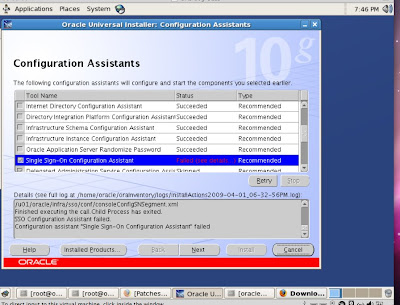
Unfortunately, the error message is unclear and further investigation into the logs reveals the root cause:
Since the installation for 10g Application Server (OAS) fails during the SSO configuration assistant step, further analysis of the SSO logs provides the cause of the headaches:
$ cd /u01/oracle/infra/sso/log
Contains two key log files for SSO: ssoca.log and ssoreg.err that we need to examine.
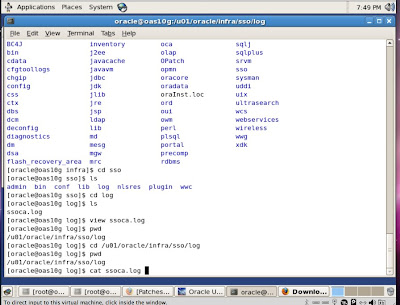
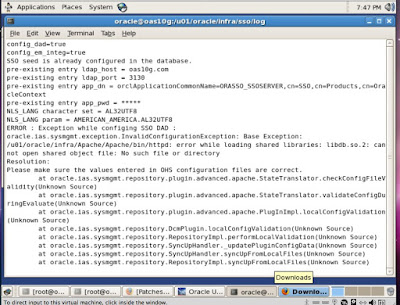
Why? Because, yes, our missing in action friend from last time, that pesky library, called lidb.so.2 is not present in a default Red Hat (RHEL5) or Oracle Enterprise Linux 5 (OEL5) installation. That poor guy just gets no respect like Rodney Dangerfield would say. Even the up2date oracle-validated command from the Oracle Unbreakable Linux network forgot this one. Hmm, maybe if I run into the Linux development team at OpenWorld I can ask them to include our friend libdb.so.2 in the Linux setup for next release of OEL! OK, so how do we solve this? Same as last time. We need a patch, well actually its our missing friend the libdb.so.2 library. So we got Metalink and download patch 6078836 and copy it over like we did earlier for our R12 EBS installation.
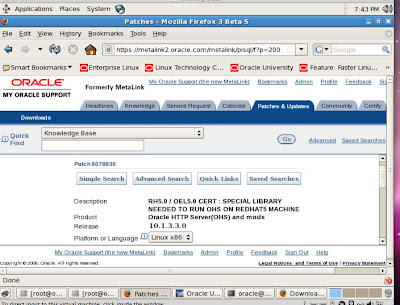
As smart DBAs, we review the README.txt file before apply the patch which gives us the installation steps and backout steps.
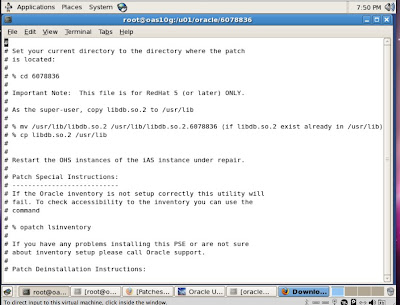
Now, after we download We need to unzip the patch that contains this missing library and as root superuser copy it to /usr/lib directory. We can resume the installation without further incident. One note that during the install, toward the end, when the installation process brings up the Apache HTTPD server processes via opmnctl utility for the first time, it will complain on errors. Ignore and continue. The install should now finish. We are happy to see the success screens listed below.
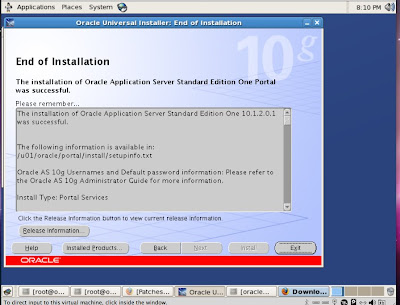
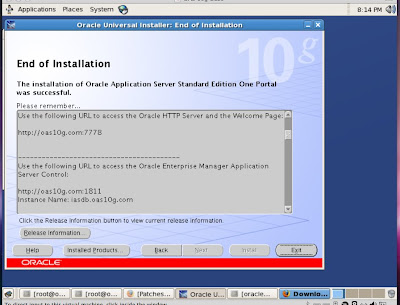
Now the final steps, are to verify the installation for our 10g Oracle Application Server database and web portal infrastructure.
First, we logon to the main 10g Application Server control as ias_admin account.
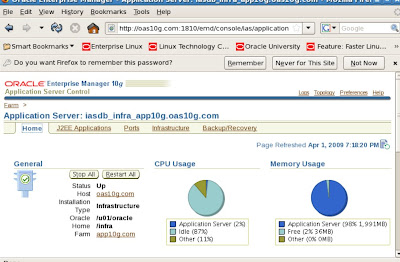
Good. All of the web portal components including OC4J and SSO are up and running. Now, lets check out the default topology setup post-install.
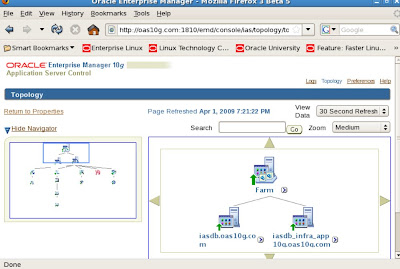
Excellent. Now our last post-install verification step for 10g Oracle Application Server (10.1.2.0.1) is to connect to the Oracle 10g database repository and check the listener. First we set the .bash_profile for the oracle user account with Linux and then we logon to the 10g repository database.
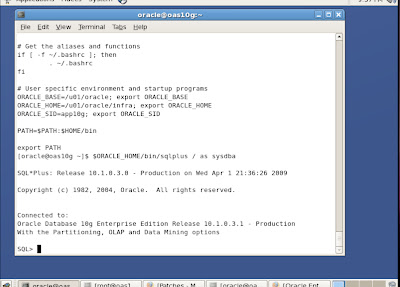
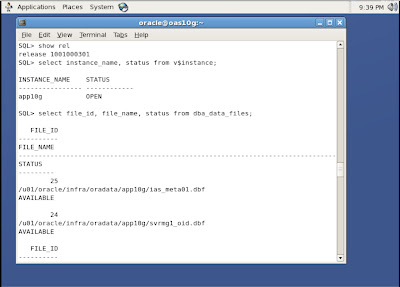
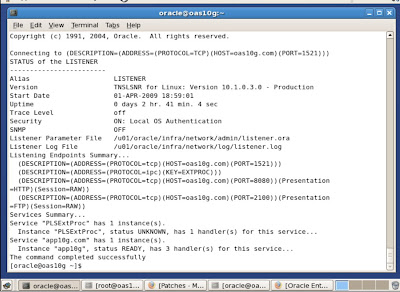
Next up on our tour of Oracle- how to install the OBIEE software for OEL5 on VMWare! Stay tuned.
Cheers,
Ben










No comments:
Post a Comment